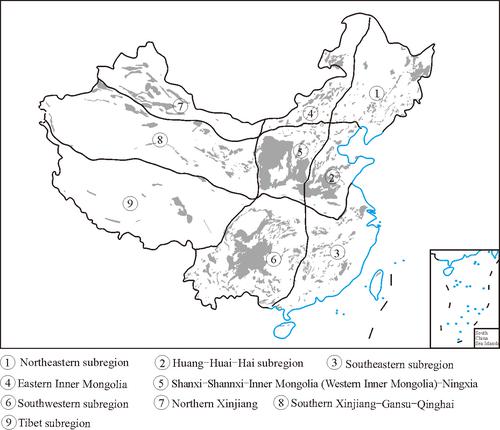当前位置:
X-MOL 学术
›
Acta Geol. Sinica Engl. Ed.
›
论文详情
Our official English website, www.x-mol.net, welcomes your feedback! (Note: you will need to create a separate account there.)
Coordinated Exploration Model and its Application to Coal and Coal-associated Deposits in Coal Basins of China
Acta Geologica Sinica-English Edition ( IF 3.3 ) Pub Date : 2020-01-21 , DOI: 10.1111/1755-6724.14495 Tong WANG 1, 2 , Jie SUN 1, 3 , Zhongyue LIN 2 , Huiming FANG 3 , Yue WANG 4 , Yifen LIU 3
Acta Geologica Sinica-English Edition ( IF 3.3 ) Pub Date : 2020-01-21 , DOI: 10.1111/1755-6724.14495 Tong WANG 1, 2 , Jie SUN 1, 3 , Zhongyue LIN 2 , Huiming FANG 3 , Yue WANG 4 , Yifen LIU 3
Affiliation

|
China is a top world producer of coal resources with numerous coal-rich basins country-wide that also contain coalbed methane (CBM), an unconventional natural gas resource. Recent exploration of coal and CBM resources has also led to the discovery of rare, precious, and scattered metal minerals, including sandstone-type U and Ga–Ge–Li. High-grade and industrial-value deposits have been discovered in the Ordos, Junggar, and other basins across China during exploration for coal resources. Application of coordinated exploration theories and techniques in multiple energy and coal-associated ore deposits, such as coal and unconventional natural gas in coal, achieves efficient and practical exploration of natural resources. Based on the systematic study of accumulation and occurrence of coal and coal-associated mineral resources in coal basins, the basic idea of coordinated exploration for coal and coal-associated deposits is proposed, and multi-targets and multi-methods based on a coordinated exploration model of coal-associated deposits is developed. Coordinated exploration expands the main exploration objective from coal seams to coal-associated series, extending the exploration target from targeting coal only to coal-associated deposits. Entrance times for exploration are decreased to realize coordinated exploration for coal, unconventional natural gas and syngenetic/associated mineral resources in coal by implementing a ‘one-time approach’ —one time in and out of a coal seam to minimize disturbance and time needed for extraction. According to the differences of geological background in China's coal basins, four coordinated exploration model types, including co-exploration of coal and coal-associated unconventional natural gas, coal and solid minerals, coal and metal minerals, and coal with water resources are established. Other models discussed include a multi-target coordinated exploration model for the combination of coal, coal-associated gas, solid minerals, and metal minerals accordingly. The exploration techniques of coal and coal-associated resources include regional geological investigation and research and synthetic application of other techniques including seismic surveys, drilling, logging, and geochemical exploration. Particularly, applying the ‘multi-purpose drill hole’ or reworking coalfield drill holes into parameter wells, adding sample testing and logging wells, determining gas-bearing layers by logging and gas content measurement, jointly measuring multiple logging parameters, sampling, and testing of coal-strata help in the exploration and evaluation of coal resources, coal-associated unconventional natural gas resources, and coal-associated element minerals. Accordingly, a system of integrated Space–Air–Ground exploration techniques for coordinated exploration of coal and coal-associated minerals is established. This includes high-resolution, hyperspectral remote-sensing technique, high-precision geophysical exploration and fast, precise drilling, testing of experimental samples, as well as coordinated exploration and determination methods of multi-target factors, multi-exploration means, multi-parameter configuration and optimization, big data fusions and interpretation techniques. In recent years, the application of this integrated system has brought significant breakthroughs in coal exploration in Inner Mongolia, Xinjiang and other provinces, discovering several large, ten-billion-ton coalfields, such as the Eastern Junggar and Tuha basins, and also in exploration and development of CBM from low-rank coals in Fukang, Xinjiang, discovery the Daying U Deposit in Inner Mongolia, the Junggar Ultralarge Ga Deposit, Lincang, Yunnan, and the Wulantuga, Inner Mongolia, Ge-bearing coal deposits, and the Pingshuo Ultralarge Li–Ge Deposit.
更新日期:2020-01-21


























 京公网安备 11010802027423号
京公网安备 11010802027423号